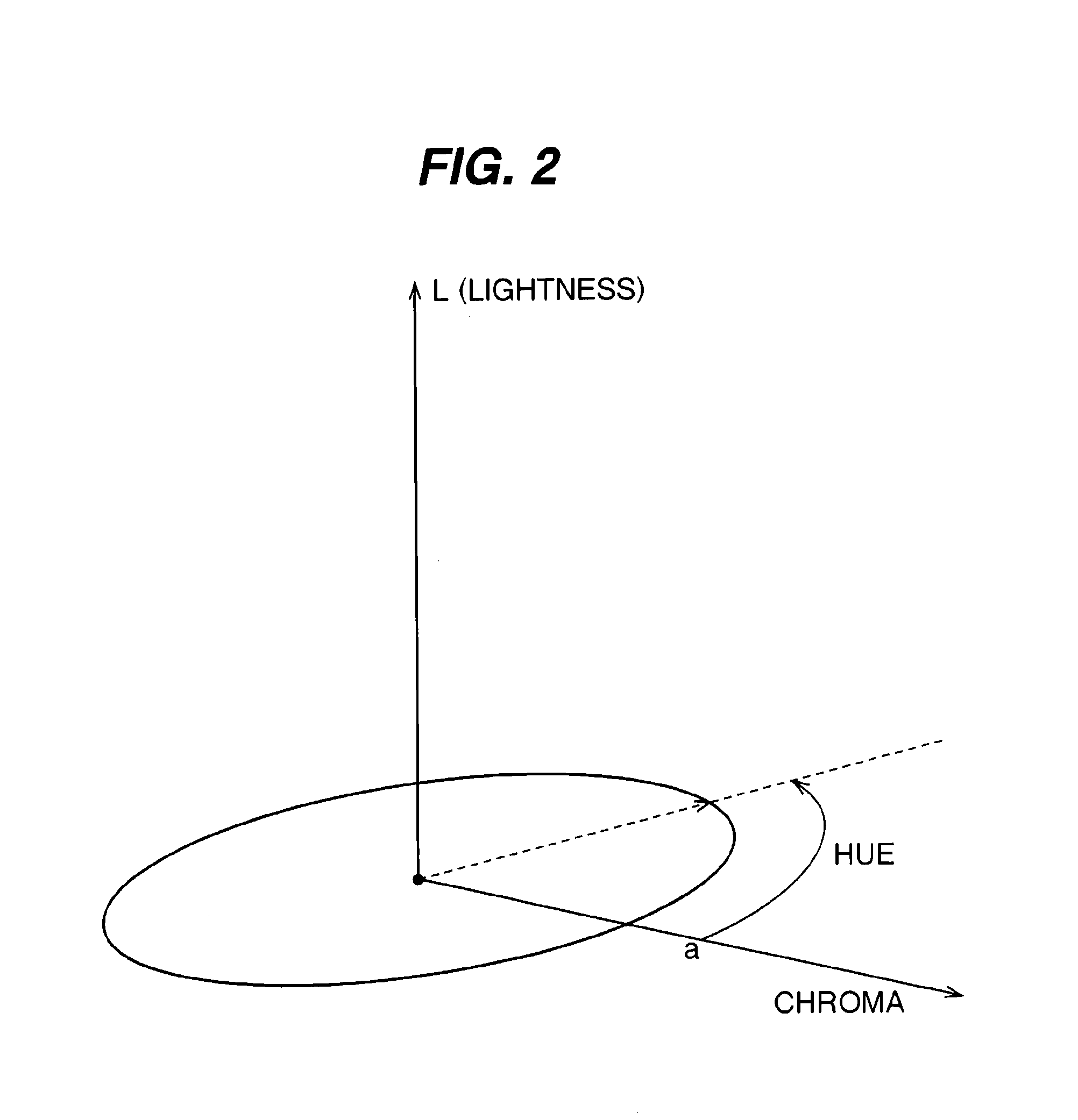Colour Display System
a colour display and colour technology, applied in the field of colour display systems, can solve the problems of unskilled users finding the system of limited use, difficult to produce a colour display which relates colours, and consumers and professionals alike having difficulty in quickly and reliably identifying colour combinations
- Summary
- Abstract
- Description
- Claims
- Application Information
AI Technical Summary
Benefits of technology
Problems solved by technology
Method used
Image
Examples
example 1
[0152]In the arrangement of Example 1 to be described first, an array is provided having rows (referred to interchangeably below as “rows” or “zones”) of stripe cards arranged in blocks (referred to interchangeably below as “sectors” or “blocks”) as previously described, but where the numbers of stripe cards in each sector is not equal to the split of the colour wheel steps. In particular, the number of colour wheel steps on the reference colour wheel is 48 as previously described, but the total number of stripe cards is 45. The reference colour wheel used in this and the following examples is the reference colour wheel described previously.
ColourWheelStep atStep atSectorCardsstepsHue at startstartendR673462733O6729.323440Go6561.144145Y5582.28462G8797.8939B77166.591016V710256.61726
[0153]The table above sets out the number of stripe cards in the array of Example 1 to be described, and in which blocks they are disposed. In particular, for each row of the array 7 blocks of stripe cards...
example 2
[0180]In this example the number of stripe cards in each row=48 ie the same as the number of steps on the reference colour wheel. In addition, the lightness and chroma values which define the different zones are arranged differently from example 1: in particular, compared to example 1, this example shows that it is not the number of cards in each sector but the divisions of the sectors that affects the resulting conformity value.
ColourWheellowesthighestLowestSectorCardsstepsstepstephueR772733346O77344029.32Go55414561.14Y5546282.28G773997.89B771016166.59V10101726256.6
[0181]The above table sets out the number of cards in each block, reference colour wheel steps, hue angle, and lowest and highest reference wheel step for the second example, in the same manner as described previously for Example 1. There follows tables setting out the hue, lightness, and chrominance values for the first and last card (from the left) in each block, for each row, in the same manner as previously presented...
example 3
[0187]A further example will now be described, the description being in the same format as above.
lowesthighestLowestSectorCardsColour Wheel stepsstepstephueR682734346O68354233.87Go64434669.78Y5447284.55G8831097.89B781118184.77V781926274.78
[0188]The above table sets out the number of cards in each block, reference colour wheel steps, hue angle, and lowest and highest reference wheel step for the third example, in the same manner as described previously for Example 1. There follows tables setting out the hue, lightness, and chrominance values for the first and last card (from the left) in each block, for each row, in the same manner as previously presented for Example 1.
TABLEExample 3 Sector R 6 cards in each mood zoneStart ofEnd ofSector Rsector RHYCHYC3491714291718.43493010.3293013.3349496.729498.2349644.329644.8349733.329733.8349832298323491944.4293051.13493635.4294536.93494827.62957253496019.7296812.73497212.1297810.6349788.829837.60349722.929727.13491032.1291555.53491143291550349...
PUM
 Login to View More
Login to View More Abstract
Description
Claims
Application Information
 Login to View More
Login to View More - R&D
- Intellectual Property
- Life Sciences
- Materials
- Tech Scout
- Unparalleled Data Quality
- Higher Quality Content
- 60% Fewer Hallucinations
Browse by: Latest US Patents, China's latest patents, Technical Efficacy Thesaurus, Application Domain, Technology Topic, Popular Technical Reports.
© 2025 PatSnap. All rights reserved.Legal|Privacy policy|Modern Slavery Act Transparency Statement|Sitemap|About US| Contact US: help@patsnap.com



